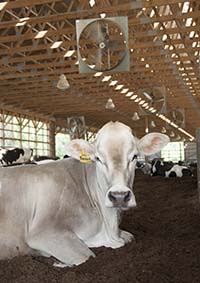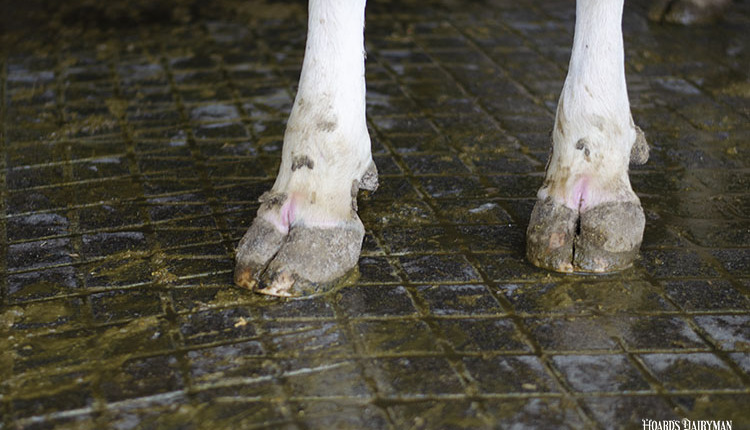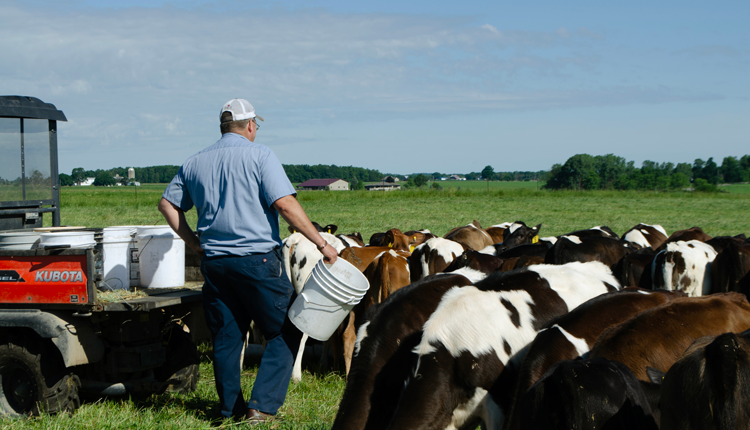
We often think hooves when we think lameness in dairy cattle, but hock injuries should receive similar concern. Hock injuries range from a small area of hair loss to open wounds, sometimes accompanied by infection and swelling of the joint. These injuries can be just as detrimental to mobility, cow comfort and milk production as hoof issues can be.
A research report released in July by the University of British Columbia (UBC) featured the prevalence of hock and knee injuries found during a lameness study. UBC teamed up with key players in the dairy industry and visited hundreds of farms in North America to benchmark lameness and leg injury data.
Hock injury data was collected on 42 farms in British Columbia (BC), 38 farms in California (CA) and 38 farms in the northeastern states of New York, Vermont and Pennsylvania (NE). Forty cows were evaluated on each farm. Hock condition was scored on a 3-point scale, where 1 was healthy, 2 was a bald area on the hock without evident swelling, and 3 was an evidently swollen or severely injured hock. The percent of cows with a visible injury (score greater than 2) and percent with a severe injury (score of 3) were recorded.
The prevalence of hock injuries varied by region, with 42 percent in BC, 56 percent in CA, and 81 percent in the NE. Severe hock injuries were found in 4 percent of BC cows, 2 percent in CA and 5 percent in NE.
Swollen knees were also recorded as present or absent on the United States farms. Few swollen knees were observed on CA dairies, less than 1 percent, but a mean prevalence of 23 percent was found on NE farms. In this study, more farms in the NE were using older facilities and less bedding, which may explain the higher incidence of hock and knee injuries.
Skin injuries tend to occur on parts of the body that come in contact with elements of housing, and the most common injuries happen on knees and hocks. Previous studies have shown that the risk of hock injuries can be greatly reduced by using deep bedding, and lesions are much more common on farms using mats and mattresses that are poorly bedded. In one study in particular, deep-bedded stalls reduced the odds of hock lesions an incredible 95 percent.
Other management practices linked to reduced hock injuries included clean bedding, access to pasture during the dry period, and avoiding the use of automatic scrapers for manure removal.
 The author is an associate editor and covers animal health, dairy housing and equipment, and nutrient management. She grew up on a dairy farm near Plymouth, Wis., and previously served as a University of Wisconsin agricultural extension agent. She received a master's degree from North Carolina State University and a bachelor's from University of Wisconsin-Madison.
The author is an associate editor and covers animal health, dairy housing and equipment, and nutrient management. She grew up on a dairy farm near Plymouth, Wis., and previously served as a University of Wisconsin agricultural extension agent. She received a master's degree from North Carolina State University and a bachelor's from University of Wisconsin-Madison.











